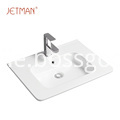Screw tap classification
Screw tapping has various shapes for the purpose of use. JIS specifications include hand twisted wire tapping, nut tapping, and pipe tapping.
1. Straight groove tapping (taper): Generally used for threading of ordinary lathes, CNC lathes, tapping machines, machining centers, drilling machines, cutting speed is slow. It is divided into machine straight slot tap (tap) and hand straight slot tap (tap). Machine tap is usually high speed steel wire tapping, suitable for tapping on machine tools. Hand tapping refers to carbon. Tool steel or alloy tool steel rolling (or incisor) wire tapping, suitable for manual use. It has the most versatility, and can be processed through through holes or through holes, non-ferrous metals or ferrous metals, and the price is also the cheapest. But the pertinence is also poor, everything can be done, and nothing is done best. The cutting cone portion can have 2, 4, and 6 teeth, a short cone for the through hole, and a long cone for the through hole. As long as the bottom hole is deep enough, the cutting cone should be used as long as possible, so that the teeth sharing the cutting load are more and the service life is longer.
Second, the tip of the wire tap (tap): the tip of the wire tap (tap) is also known as the screw tip tap. It is a tapping operation in which the through hole is cut, and the chips are discharged forward when the thread is machined. Its core size is relatively large in design, strong in strength, and can withstand large cutting forces. The processing of non-ferrous metals, stainless steel, and ferrous metals is very good, and the threaded taps should be preferred for through-hole threads. The tip tap is mainly used for cutting the thread of various through-hole materials. The tip tap (the tap) has the same linear groove as the general hand tap, but has a special design at the front end of the cutting part. The spiral groove is rotated from the bottom of the hole by the rotary push cutting. Since the tip wire tap (the tap) has the function of rotating the chip, the groove can be cleaned to reduce the resistance during cutting, and the cutting can be avoided. Blockage causes damage to the wire tap, so the tip tap can cut the high-precision thread faster than the normal hand tap.
3. No groove extrusion tapping (tap): No groove tapping (tap) is also called as a chipless wire tap (tap). It is to squeeze the metal to deform it and form the internal thread, so it will not produce chips, and it will not damage the thread or the wire attack due to problems such as chip blocking. The grooveless tap is the most suitable for tapping. Processed with plastic materials such as aluminum, copper, zinc, and flavonoids in low carbon steel. The cutting portion of the grooveless tap has four teeth and two teeth. When using the grooveless tap, the size of the lower hole must be selected in accordance with the accuracy requirements, so that high-precision, high-quality threads can be molded.
4. Spiral tapping (tap): Spiral tapping (tap) can also be called spiral groove tapping (tap). It is a tapping operation for the non-through hole cutting material. The spiral wire tap (tap) will exert its unique cutting effect, and the fastest thread can be cut quickly and smoothly for you, the spiral wire tap (tap) and the general hand tapping The difference is that the ordinary hand taps the groove into a straight line, and the spiral tap is tapped. When the spiral tap is tapping, the spiral groove can be used to lift the iron easily. The chip is discharged outside the hole to prevent the iron chips from remaining or being stuck in the groove, which causes the broken edge of the screw to break. Therefore, the life of the wire tapping can be increased and the highest precision thread can be cut. The spiral wire tap (tap) is suitable for cutting high. Toughness material, not suitable for cast iron, etc. The chips are finely divided. Spiral groove taps are mostly used for drilling blind holes in CNC machining centers. The machining speed is fast, the precision is high, the chip removal is good, and the centering is good. The front of the spiral tap has a groove for the processing of the through hole.

Concerned about surprises
Label: Screw tap classification
Previous: Analysis of hydroforming technology characteristics Next: Classification and selection of saw blades for band saws
Thin-edge ceramic bathroom hand wash Basin is cabinet basins with edge thickness 16mm-18mm. Elegant shape with different size and bowl depth. wholesale porcelain outdoor counter wash basin Double tank bathroom cabinet hand wash basins Toilet ceramic sink.For more details, thanks to click the relative items to view more information.Equipped with most advanced casting equipment and computerized kiln, Jetman is able to meet daily capacity of 3,000pcs. By installing most advanced production equipment, JETMAN has introduced more than 300 designs into its range, including Thin-edge basin, Mid-edge basin, Cabinet Basin, laundry basin, Art Basin, Counter basin and Color Basin. Thanks to its own R&D department, Jetman has an edge over others in developing exclusive designs upon customer drawings. Options of purchasing either AB grade or A grade are available.
Ceramic Bathroom Double Wash Basin,Long Narrow Bathroom Sink Basin,Bathroom White Wash Hand Basin, Wash Basin for Bathroom,Small Size Wash Basin Rectangular,Luxury Wash Basins,Vanity Top Bathroom Sink,White Wash Hand Basin,Mosaic Bathroom Tiles
GUANGDONG ZHIJIE SANITARY WARE CO., LTD. , https://www.zhijiesanitary.com